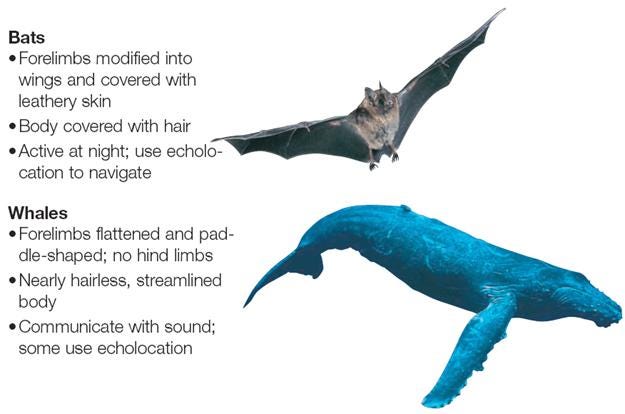Convergent Molecular Evolution: How Different Species Evolve Similar Traits
Have you ever wondered why some organisms look or act alike even though they are not closely related? For example, why do sharks and dolphins have similar body shapes, or cacti and euphorbias have similar spines?
The answer is convergent evolution, a process by which different species evolve similar traits independently.
Convergent evolution can happen at different levels of biological organization, from morphology (shape and structure) to biochemistry (molecular mechanisms). Here, I focus on convergent molecular evolution, which occurs when different species evolve similar changes in their DNA sequences or protein structures that affect their functions.
One way to detect convergent molecular evolution is to compare the genes or proteins of different species and look for similarities not explained by common ancestry. For example, if two species share a gene with the same function but different sequences from their closest relatives, it may indicate that they have independently evolved the same changes in that gene. Alternatively, if two species share a gene that has different functions but has similar sequences from their closest relatives, it may indicate that they have independently evolved the same changes in that gene that altered its function (Stern 2013, Nature Reviews Genetics).
One of the fascinating examples of convergent molecular evolution is the hearing gene Prestin. Prestin is a protein that is found in the outer hair cells of the inner ear and is responsible for amplifying sound signals. Prestin is essential for high-frequency hearing, which is crucial for echolocation, a biological sonar system that some animals use to navigate and hunt in dark or murky environments (Li et al. 2008, PNAS).
Echolocation has evolved independently in several groups of mammals, such as bats and toothed whales (dolphins, porpoises, and sperm whales). Interestingly, these echolocating mammals have evolved similar changes in their Prestin genes that make their proteins more efficient at amplifying high-frequency sounds. These changes are not found in their non-echolocating relatives, such as fruit bats or baleen whales. Moreover, these changes are so similar that if you compare the Prestin sequences of echolocating bats and toothed whales, they group as if they were more closely related than they are (Liu et al. 2018, Science Advances).
How did these convergent changes in Prestin arise? There are three possible scenarios: first, they could be the result of random mutations that occurred independently in different species; second, they could be the result of ancestral variation that was present in a common ancestor and was maintained or selected in different lineages; third, they could be the result of gene flow or hybridization between different species that exchanged genetic material. The evidence suggests that the first scenario is the most likely one, as there is no sign of ancestral variation or gene flow between echolocating bats and toothed whales.
The case of Prestin illustrates how convergent molecular evolution can reveal the genetic basis of complex adaptations and how natural selection can shape similar solutions to similar problems in different species. However, Prestin is not the only gene involved in echolocation; other genes related to hearing, neural development, and metabolism may also have evolved convergently in echolocating mammals. Moreover, many other examples of convergent molecular evolution in nature exist, such as some mitochondrial genes in snakes and lizards (Castoe et al. 2009, PNAS). These examples show how diverse life forms can share common molecular mechanisms despite their evolutionary distances.
Connect with Genomely!
Substack: Genomely from Jacob L. Steenwyk
Twitter: @Genomely
GitHub: GenomelyBio
Connect with me!
Twitter: @jlsteenwyk
Website: jlsteenwyk.com





